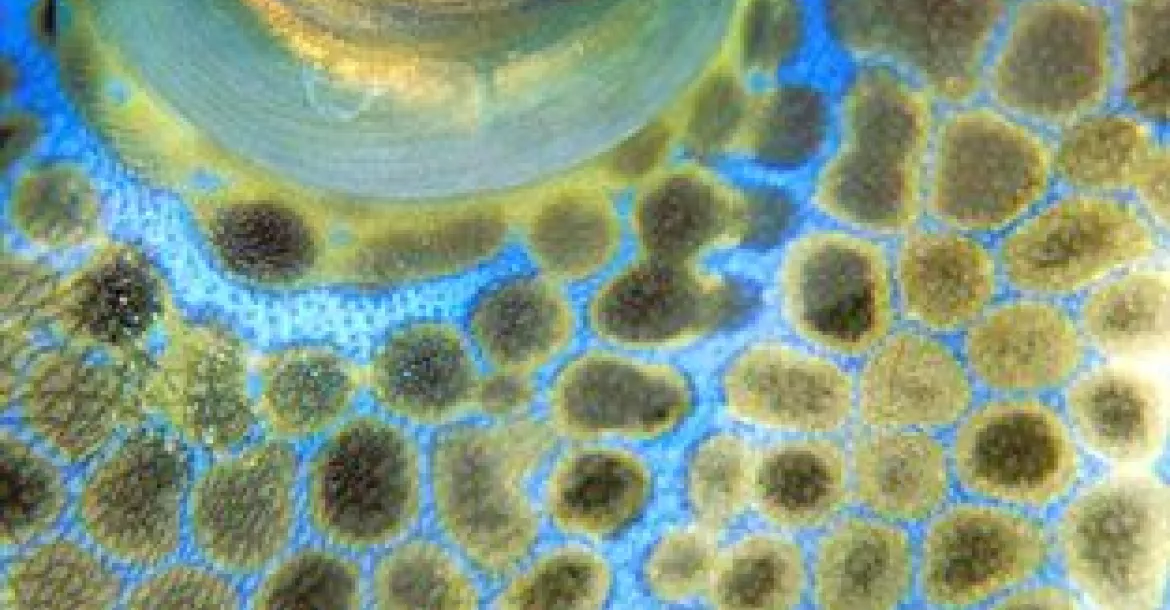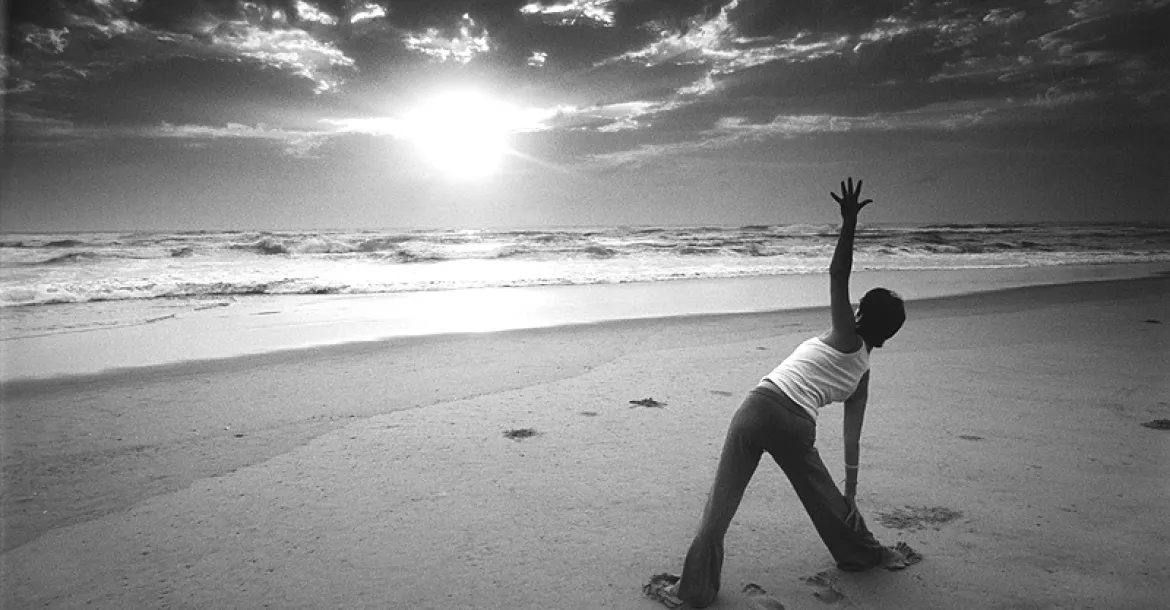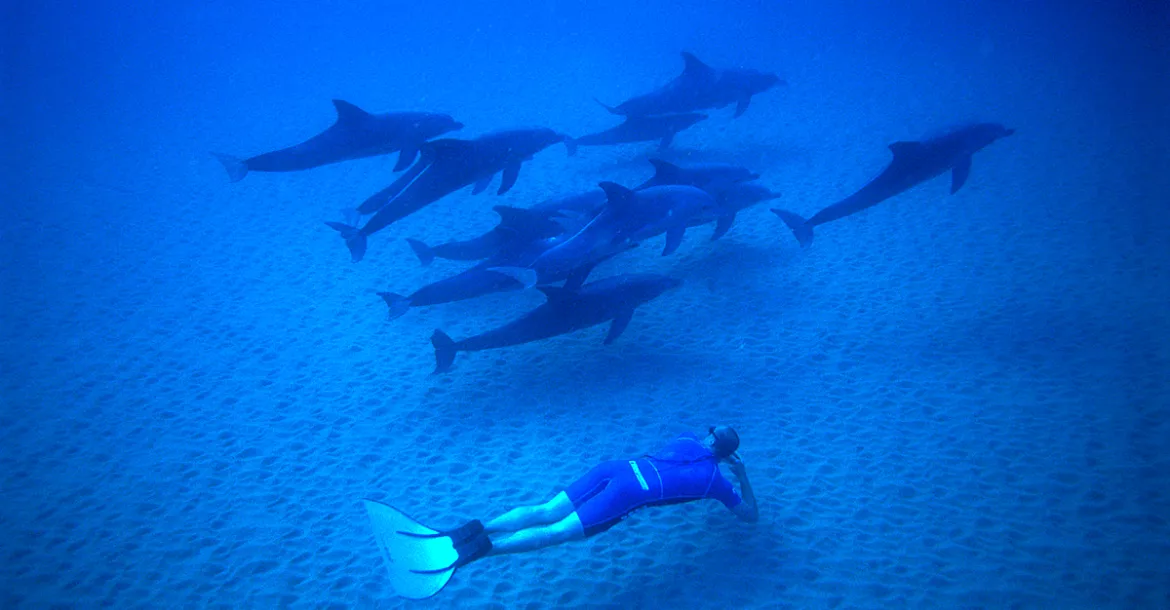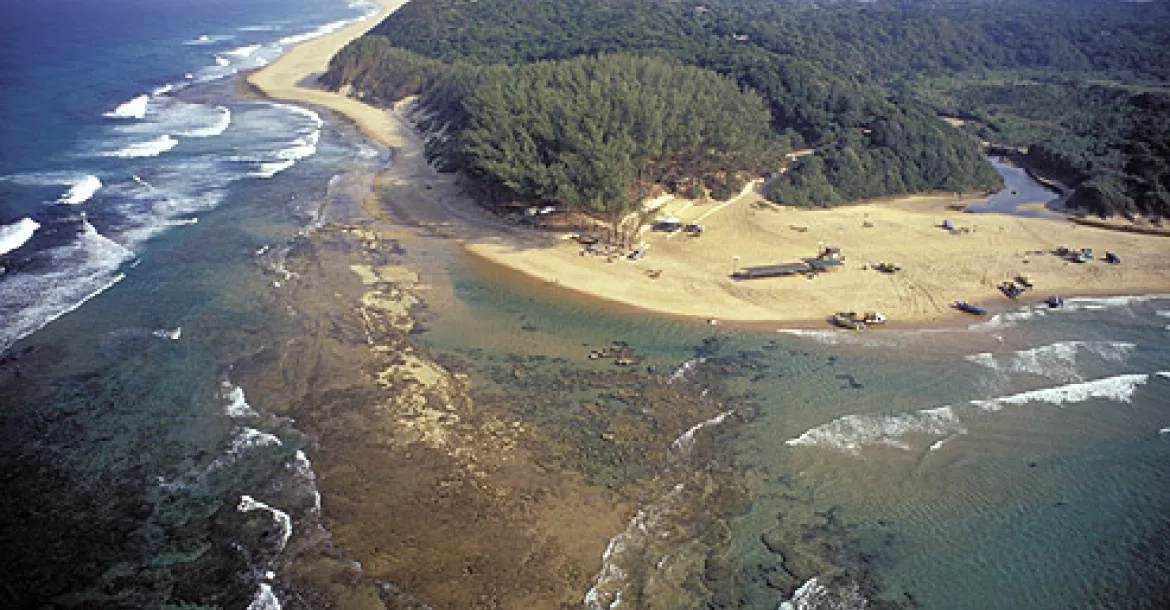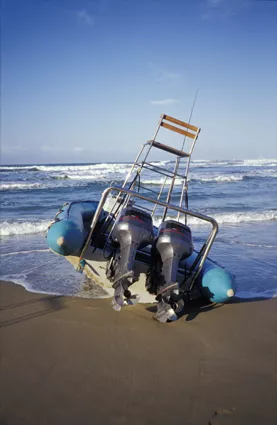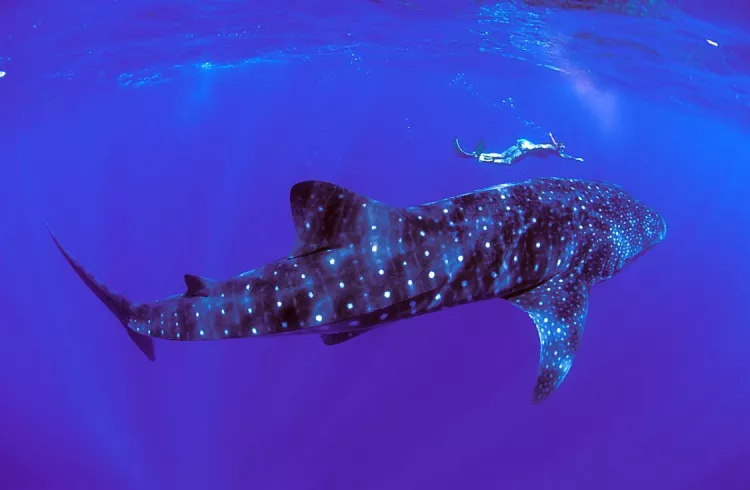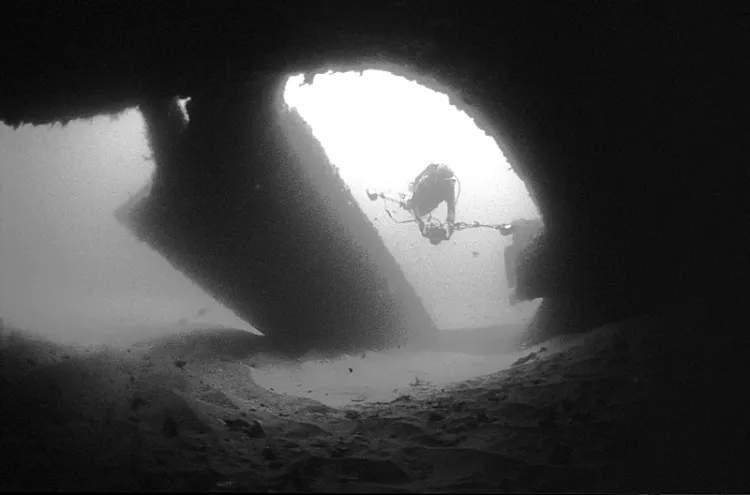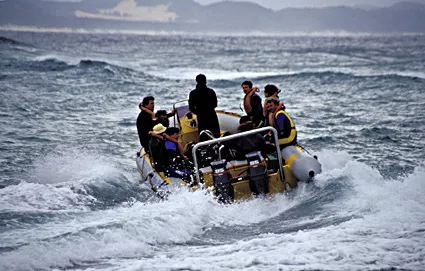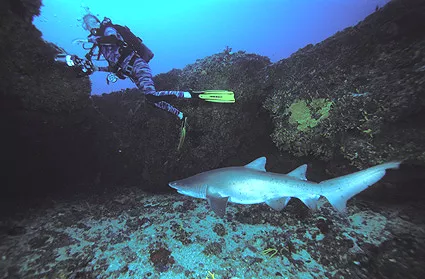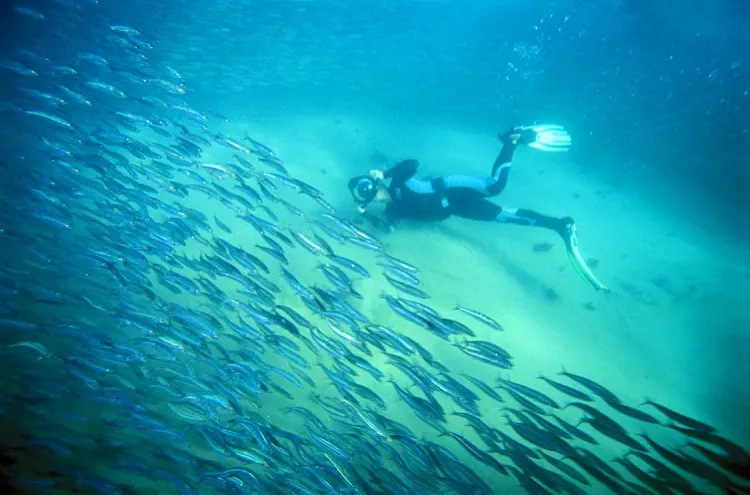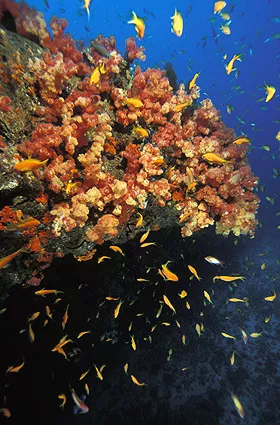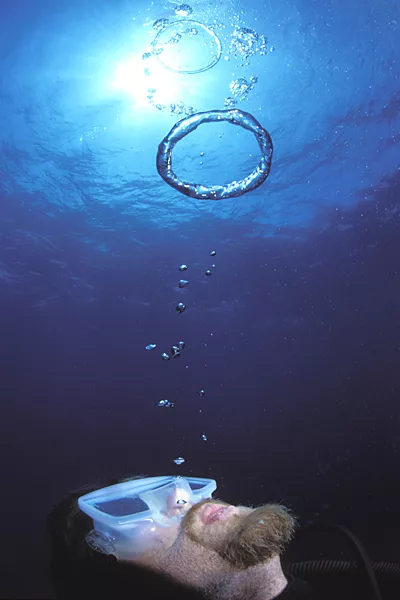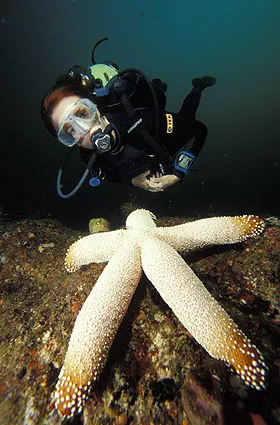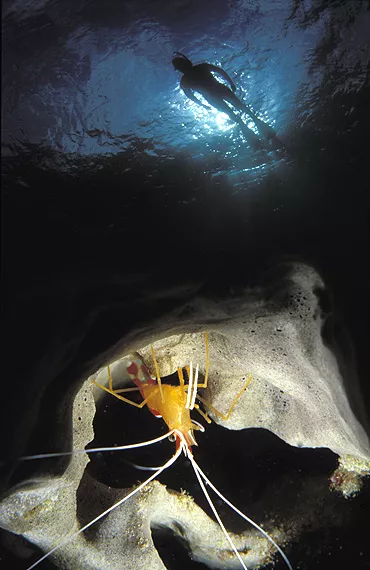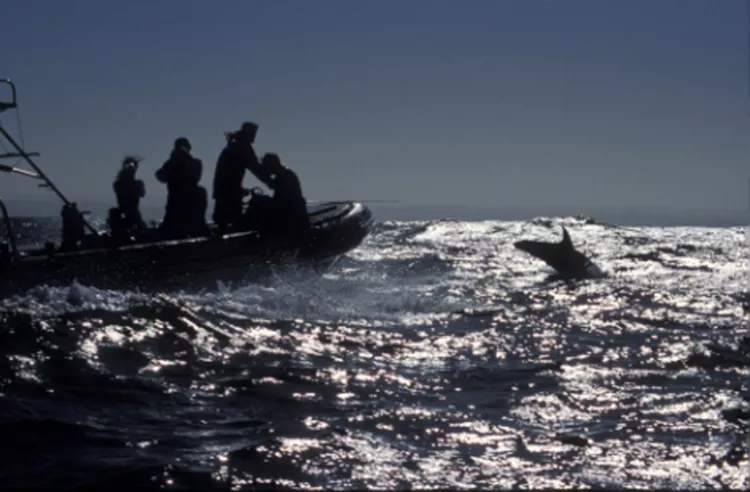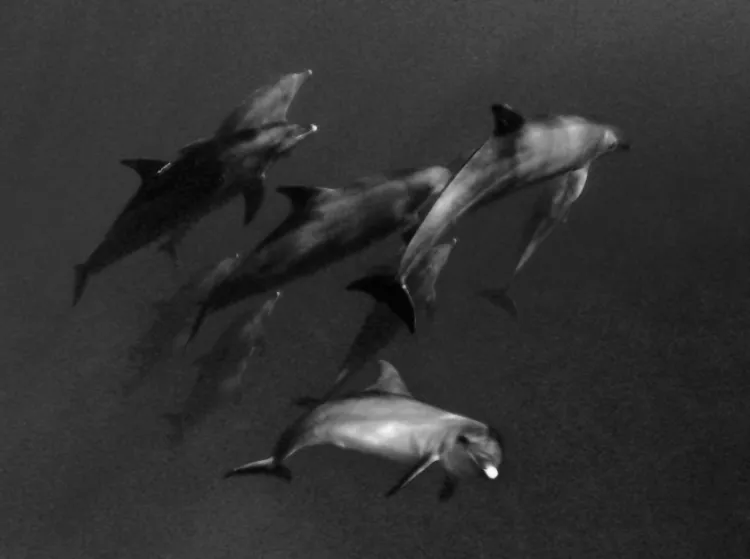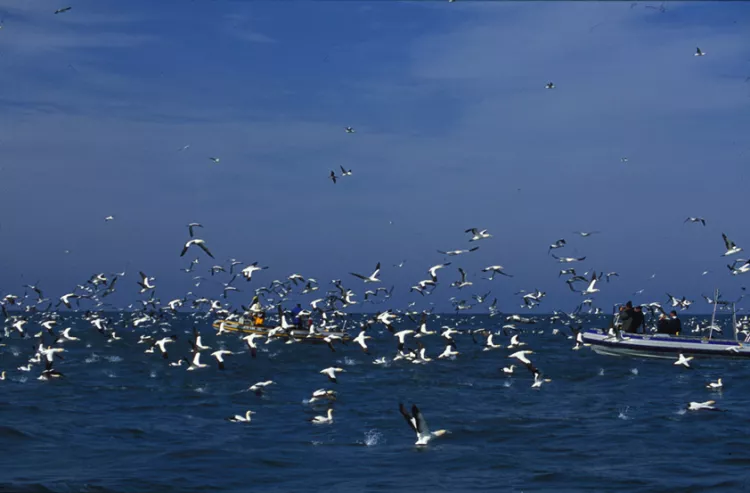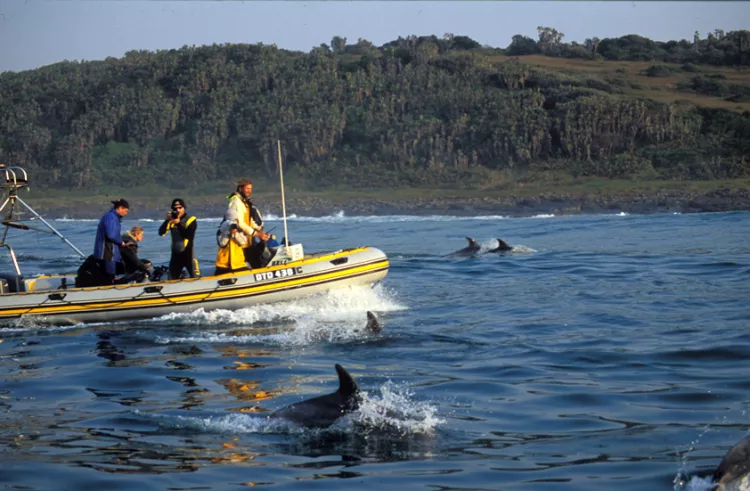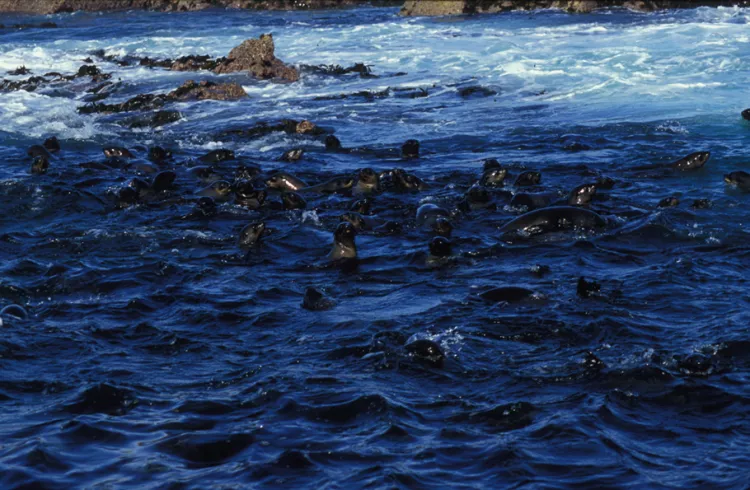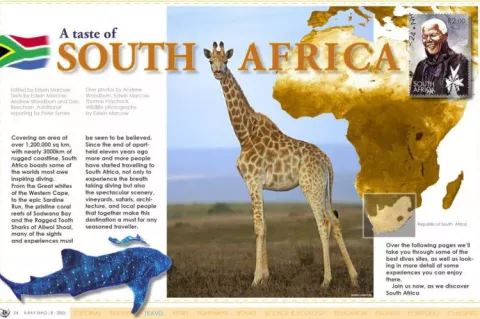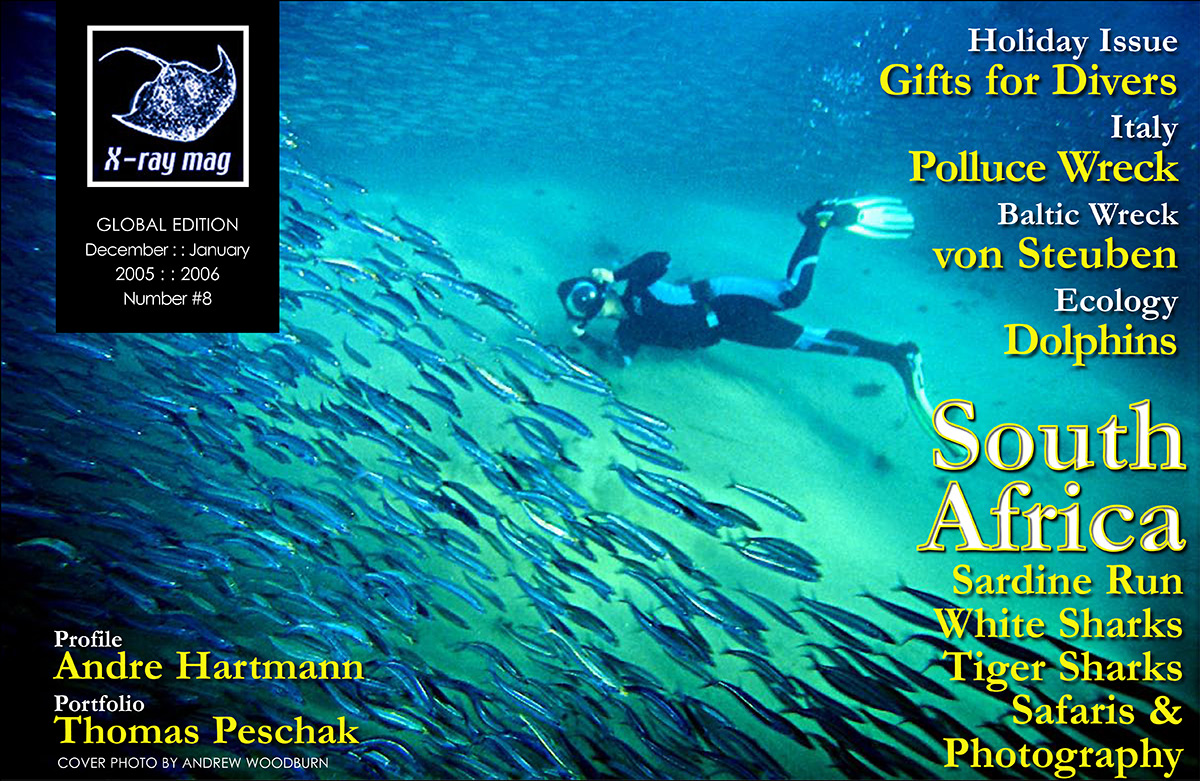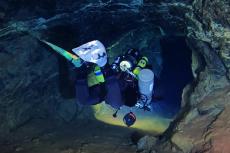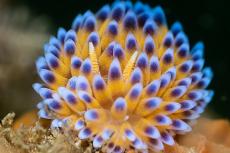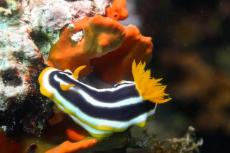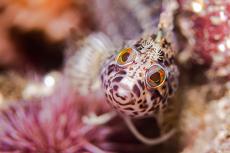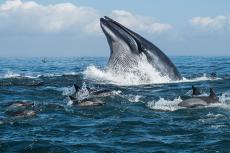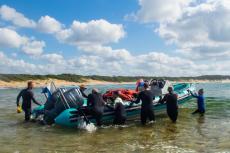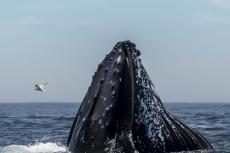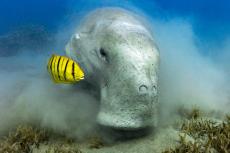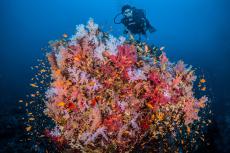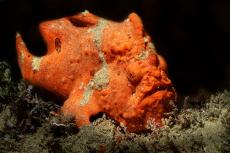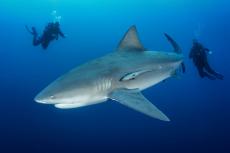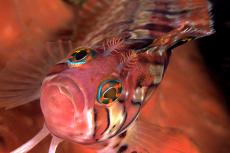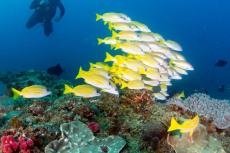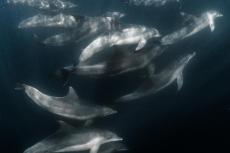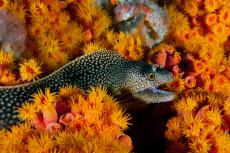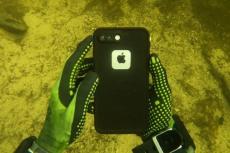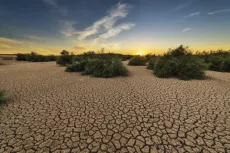Covering an area of over 1,200,000 sq km, with nearly 3000km of rugged coastline, South Africa boasts some of the worlds most awe inspiring diving.
From the Great whites of the Western Cape, to the epic Sardine Run, the pristine coral reefs of Sodwana Bay and the Ragged Tooth Sharks of Aliwol Shoal, many of the sights and experiences must ofbe seen to be believed. Since the end of apartheid eleven years ago more and more people have started travelling to South Africa, not only to experience the breath taking diving but also the spectacular scenery, vineyards, safaris, architecture, and local people that together make this destination a must for any seasoned traveller. Over the following pages we’ll take you through some of the best dives sites, as well as looking in more detail at some experiences you can enjoy there.
Join us now, as we discover South Africa
Contributed by
The following guide details the locations and encounters of the best sites to dive in South African waters. Conditions encountered in the Cape are not that dissimilar to diving in the North Atlantic Ocean. For the Cape and Western Cape a drysuit is strongly recommended. Whether on land or sea South Africa is home to predominately large animals. This guide starts from Cape Town follows the coast and finishes on the Mozambique border.
The primary three dive locations are Gansbaai, The Sardine Run, and Sodwana Bay - though there are also many interesting and varied shipwrecks dotting this rugged and extensive coastline. Since the 15th century ships from all over the world have come to rest here, the most famous wreck being the HMS Birkenhead.
A Note of Caution
Diving in the proximity of Seal Island, off Mossel Bay or any large seal island colony’s is not recommended and should be considered hazardous. In June 1990 the first recorded fatal shark attack on a fully kitted diver took place here. 21-year old Monique Price was attacked on the surface and later died of her injuries.
Cape Peninsula & The Western Seaboard
This region is one of the most scenic and beautiful areas of the country. The coastline consists of spectacular mountain and cliff drives that lead down to superb dive sites, with cool water ich often have excellent visibility in gin clear - but cold water. The busy picturesque harbour of Hout Bay lies just a short drive from the beach and town of Llandudno, Horse riding on the beaches of Kommetjie, and South Africa’s premier sunbathing beaches of Clifton and Camps Bay with excellent restaurants and bars, and people watching are all here.
The Lusitania
This wreck is situated 2.5 km off Cape Point. The Lusitania was a twin-prop Purtuguese passenger liner ran aground on Bellows Rock around midnight on April 18, 1911. The 800 crew and passengers on board survived the grounding but eight passengers foundered when a lifeboat capsized. Two days later the 5500 tons liner slid off the rock and sank. It now rests in a position that is quite exposed to the elements and conditions have to be perfect to dive this site safely. There is a rich and varied sealife on the wreck but it remains a fairly deep dive with a maximum depth at this site of 37m making it recommendable only to experienced divers as a strong surge can also be encountered on this location.
Vulcan Rock
- a large rock pinnacle rising to few meters below the surface off the Karbonkelberg, a short boat trip south west of Hout Bay. It is covered with hard and soft corals and playful seals are plentiful here. Nudibranchs, deep-water cowries, and crayfish are other good photo subjects here. Vulcan Rock has a large tunnel running through its base at around 40m. The average depth for this dive site is around 25 meter.
Vulcan rock lies in an area where cold upwellings frequently occur and when it happens the water gets gin clear but icy cold - so wear an appropriate suit. There can be a strong surge if there is a swell running and currents can occur at any depth even of there are none at the surface. Bringing a SMB (see Leigh Cunninghams article elsewhere in this issue of X-Ray Mag) and a drift line is strongly recommended as the surface current can run at up to five knots.
The Romelia
- a 20,000 tons LIberian oil tanker which foundered on the rocks on the stormy winter night ofJuly 29 1977. The Romelia was on tow with another ship destined to be scapped in Taiwan when the storm proved to put too much of a strain on a towing cable which snapped and sent the Romelia to her final resting place off Sunset Rocks, Llandudno.
This big wreck lies fairly close to the cost. From the waters edge it is only a 200m swim to the wreck. The surge can, however, also at this site be very strong on the southern side and there is a strong suction through a hole on the Llandudno on the northern side of the wreck so it should only be dived when conditions are perfect.
The wreck is partially broken down with the bow section destoyed but the stern is still relatively intact. As the wreck rests of the rocks the engine room is partially out of the water though it must be entered underwater. Be careful however and don’t attemp penetration without proper training and an accompanying buddy.
There can also be quite a suction through the wreck from the swell and currents outside. Together with the surround areas with its dense kelp forest it makes for an interesting dive with lots of good photo opportunities with colourful invertebrates, crayfish, hottentots and other small fish living in the dense kelp forests.
Coral Gardens
This site is one of the less known sites around the Cape but one of the most beautiful and rewarding ones nonetheless in spite of the location being quite popular and crowede with picnicing families. Beneath the surface however is stand out like an virtual underwater garden with the brilliant colours of soft corals standing out in shades of pinks, yellows, reds and oranges and healthy anemones everywhere.
As it is a rocky coast full of big boulders with the site opening up toward the opens seas straight in the direction of the prevailing swell resulting in heavy surge, this site is best dived on a calm day. The maximum depth is no more than 18m with an average depth of 10m.
Justin’s Caves
is another recommedable coastdive nearby Camps Bay. It can be quite tricky to enter and exit, having to scramble up and down rocks and boulders in full kit but the prolific and brightly coloured underwater life makes this dive highly rewarding and recommendable.
Most prominently the majestic caverns - that gives this site it name - and impressive arches and swim-throughs makes is an awesome coastdive for novice and experienced divers alike. To make the most of the dive and spot the critters hiding in the crevices, bring a good dive torch.
This place is known for its large crayfish. Also a lot of small bottom dwelling sharks can be seen here. As with other sites in the area this location is affected by the stong currents resulting in a strong surge through some of the tunnels.
There are two entry points, which alter depending on the tide. Surface swim to site is about 150m but a strong south-easternly can make the surface water pretty rough and in these cases the swim forth and back to shore is best done underwater. In these cases bring a compass, as the underwater geography can be rather disorientating.
This is an excellent night dive as well, both for the novice or experienced diver with the abundance of marine life making every new turn around a corner worthwhile.
Geldikis
This rock about 400m out to sea off Sandy cove can make for quite a hard surface swim through chilly waters to get to but the dive makes it all worthwhile. It is a site to visit only in near perfect conditions as the swim can be very tiring in choppy seas, and there can also be quite a surge around the blinder in a big sea. Once there however the reef is the reef is un-spoilt, due to it being a bit bothersome to get to, hosting a diverse range of nudibranchs and crayfish.
There is also a cave with a chimney at 15m, and octopuses can be found hiding in the crevices and overhangs in the reef.Put it all together and this is a naturally beautiful dive. IF the swim seems to long there two flat rocks between Geldikis and the coast that can serve as a resting place.
This area is part of the Cape Town city metropolitan area—close enough for non-diving partners to take full advantage of all that Cape Town has to offer meanwhile you go diving. The water temperature along this side of the bay is always a few degrees warmer than on the western side of the Peninsula. Temperatures can reach as high as 18° C, but also drop to as cool as 12° C. Visibility is usually between five and ten metres, if a south-easterly has been blowing, which is most likely during summer, visibility may drop to zero. In winter the visibility can be an incredible 30m.
Boulders Beach & the famous penguins
This beach is one of the prettiest and most sheltered beaches in the Cape. A large resident population of endangered Jackass penguins reside here. A great place to spend the day sunbathing and relaxing as you share the beach and quite often your lunch with these very lovable and inquisitive fellow beach dudes. A good spot for beginner snorkellers, very fortunate divers have seen the penguins “fly underwater”.
Whittle Rock
Whittle Rock is an awesome dive site situated in the middle of False Bay. The rock climbs the water column to within three metres of the surface and covers a large area.
The invertebrate life is very colourful and unspoilt as there is very little diving here.
This is most likely due to the increased chance of making contact with a Great White shark – a number of divers have had a Great White Shark effortlessly cruise past them - so maximum caution should be exercised at all times, though to date no shark has yet interfered with a diver. The site is huge and offers and wide variety of different diving from shallow to deep with the Rock formations creating a varied and interesting landscape. D
ue to the size of the reef there is always somewhere different to dive. As with many of the further dive sites there is a prolific amount of sea life making a favourite Spearfishing location. If you plan on spearfishing, keep in mind that fish should be kept on the boat, not a float line as any speared fish will attract sharks.
Batsata Rock
This site is located on the Cape Point side of Smits and consists of a large blinder that reaches within six metres of the surface. The rocks make awesome underwater scenery and with the prolific abundance of fish makes a great dive. There is a great chance of seeing some pelagic fish (yellowtail in particular) as well as many of the other fish common to False Bay. The Rock is also covered with colourful growth common to the area. An excellent dive for multi-level dives as it slopes gently from 30m.
The Wrecks of Smitswinkel Bay
About 30 years ago five wrecks were scuttled as artificial reefs in Smitswinkel Bay, where conditions are sheltered and fairly calm. An echo sounder is essential to accurately locate these wrecks.
There are two former navy frigates, the SAS Transvaal and SAS Good Hope, and the Rockeater which was a diamond dredger as well as two fishing trawlers, the Princess Elizabeth, and the Oratava.
The depth, combined with the upright position of the frigates and the dredger makes these a thrilling and exciting dive. Maximum depth 40m, average depth 35m. Best accessed by boat from Millers Point, Kalk Bay, or Simon’s Town.
The Eastern Side of False Bay
Steenbras Deep
The pinnacle is covered by big fans and sponges, with plenty of fish around. As it starts at a depth of 17m it is best found with an echo sounder.
At this unsheltered position, the sea can be choppy with a strong surge if a south-westerly wind is blowing but it can be dived in a moderate swell.
This dive is not recommended for novice divers however. Maximum depth 30m.
Gansbaai
[Afrikaans, English meaning: Goose bay]
This region is home to some of the most awsome animals encounters one could wish for: A huge apex predator with very sharp teeth right in your face.
Yes, we are talking about Great White sharks, close-up and personal. If you are looking for an experience that will leave you feeling both scared, excited, humbled, and privileged this is it. There aren’t really any words that can accurately describe the feeling of being slipped a notch or twos down the food chain.
Though there are other locations in the world were you could cage dive with Great White Sharks nowhere else is it so accessible - with shore-based accommodation and modest boat trip. Dyer Island is just a ride from most bases in Gansbaai.
Dyer Island
This location is really a couple of islands, Dyer Island and Gyser Rock and the channel that separates these two islands is called shark alley. It is located off the southern Cape coast, a 30-minute drive from the holiday town of Hermanus and a two-hour drive from Cape Town.
The boats leave from Kleinbaai [small bay], just outside of Gansbaai village. The boat ride to the site takes 20-25 minutes.
The HMS Birkenhead
This infamous wreck lies on the western side of Birkenhead Rock 2.5km off Danger Point. HMS Birkenhead, a British troop carrier sank on the 26th of February 1852 after hitting the rocks at Danger Point, She sank with the souls of 638. It was on this fateful night that the tradition was born of “women and children first”.
Of those that survived the initial impact on the rocks, most either drowned or were taken by Great White sharks. The wreck consists of three main sections, the bow, the engine room, and the stern. This site is rarely dived by sport divers but for those that do –this is a very rewarding experience.
Legend has it that £300’000 in gold and silver rests within her bows. Money being shipped by the army to pay its troops in the colonial wars. There have been many attempts to salvage her, most recently with much controversy in 1985, though with much disappointment. It is strictly prohibited to remove anything from this shipwreck.
The beautiful long stretch of coastline that runs from Mossel Bay to Tsitsikamma National Park between the Southern and Eastern Cape provinces is affectionately called the Garden Route. In the middle, we find Plettenberg Bay, or Plett, a hot spot for Cape Townians to holiday with beautiful country and long deserted golden beaches. The Portuguese called her Bahia Formosa, meaning beautiful bay.
This is where the warm tropical waters of the North blends with the cooler waters of the cape providing with a mixed underwater flora and fauna that is not seen elsewhere in the world. While it at a first glance may seem to lack the vibrant colours of a tropical reef the underwater life is very prolific as upwelling of deep seawater takes place in this area. The best time to dive this area is September through October.
Groot Bank
Known as this reef starts 30-40m offshore. This is strictly a boat dive because a shore entry-exit would be a very long arduous, walk with kit.
This site is known for having some amazing sea life make somewhat awkward access worthwhile. The reef starts only 30 meters of the shore but access is difficult and a long walk with heavy gear, so in practice, this is a boat dive. Also known as the Sodwana of the east coast by the locals this site boasts fantastic pinnacles from 9-25m, large amphitheatres and caves and tunnels which all make for very exciting dive where you can expect to see many varieties of gamefish—steenbras, musselcracker, romans and the beautiful parrotfish just to name a few. Ragged-tooth sharks are also quite common and when they occur a highlight to any dive.
The Wild Coast
Aptly named after the big rolling ocean swells that hit this coastline right on, and the unpredictable climatic conditions that are prevalent here. It is renowned for its rugged scenery, good spearfishing and the abundant sea life but is not a popular area for scuba diving.
There are few shore entries and those that exist are difficult to navigate. Yet for those with equipped with an adventurous spirit, there are still many virgin dive sites in this region yet to be discovered and mapped. With many rivers flowing into the ocean it should be avoided altogether during the summer where there is much rainfall.
Eastern Cape
Shark’s Gulley
An excellentl little location on Fountain Rock off Port Alfred for seeing ragged-tooth sharks. As many as 30 have been seen on one dive here. There are also beautiful reef formations here and the nearby site called Towers has colourful pinnacles rising straight up from the bright white sand. Maximum depth 15m - average depth 10m
After Sodwana Bay the South Coast is the best-known and most popular dive destination in the country with Aliwal Shoal, Landers Reef and Protea Banks being the three main dive sites together with their adjoining reefs. At Aliwal shoal otherwise migratory spotted ragged-tooth sharks are in residence.
The South Coast is a very well developed tourist area and for non-divers an absolute pleasure to holiday in the sun and comfort it has to offer. Long golden beaches, golf, tennis, horse riding, shopping malls and restaurants there is something for everyone here. Diving here is most dependable in the winter months from, May to September.
The Ragged-tooth sharks, (affectionately called raggies in South Africa) are one of the most easily identifiable sharks in the ocean. There are two species in the family. Bigeye and Bumpytail. With their heavy bodies with a short pointed snout, and with highly visible and distinctive protruding ‘ragged’ teeth and small eyes they can hardly be mistaken for any other species.
Other characteristics include a light brown in colour with distinct blotches, which fade with age. Being slow-moving, sluggish and docile they are somewhat the exception in the shark world. They can also pump water over their gills, and thus sleep and rest in caves and gullies.
Although not aggressive some individuals whose personal comfort zone has been encroached by divers these have been literally been chased out of the ocean. The actions of divers can easily disturb these shy and nervous sharks, so please approach all raggies with respect and do not try to interact with them in any way – observe only.
Raggie Cave and Shark Alley
This dive site is located on the east side of Aliwal Shoal and best accessed by boat from Umkomaas River. The site can also be so caution should be exercised. Probably best known for being the winter home to a group raggies which can be found in the caves resting.
Please do not be fooled by their docile and sleepy look. Many divers have been chased out of the water for pushing their luck too far. Do not enter the cave only observe from the sides or good vantage point.
South Sands
Also located on the east side of Aliwal Shoal, this is a a good place to observe a large number of rays, skates, sand sharks and guitarfish It is also a good place to start a drift dive, in a northerly current. Along the outer edge there are some seldomly dived ledges at 18m-22m which only makes exploring more rewarding.
Tiger Cove
Abundant with lots of caves and overhangs, named after a large colony of tiger cowries which regrettably fell prey to souvenir hunter dives. Located midway along the westerne edge of Aliwal shoal it is also a good place to start a drift dive along the inner edge. Maximum depth is about 14m.
Cathedral
An awesome site with a spectacular hole in the reef and home to many large stingrays and moray eels. The visiting spotted Ragged tooth sharks often rests in this site but are very easily disturbed here - even by the bubbles from your second stage bouncing off the archway at the entrance. The site should be dive very cautiously in a surge. Maximum depth 28m – average depth 27m
Margate
This is a very popular seaside resort which offers some of the best diving on the South African coast with large shoals of game fish congregating around Protea Banks followed by big groups of sharks
Arena
Situated on the Protea banks about 5 kms offshore and far into the Mozambique current Arean can boast a visibility of up to 40m, and never less than 8m. The visibility is best from November to May but diving is good all year with most of the sharks seen in the winter months. and always an excellent chance of encounters with game fish, Ragged-tooth sharks, Hammerheads, Zambezi, Copper, and Bronze Whaler, Threshers, and even the odd Great White Shark. Depending on the strength of the current you may be able to explore the reef, or a fast drift dive while you ‘fly’ past the various game fish and sharks.
The North Coast
A densely populated, attractive subtropical stretch of coastline north of Durban and a a very popular spot for holidaymakers. Summer rainfall is high, winters are mild and pleasant, and the vegetation is lush, green and tropical. To my eye vast parts of this part of South Africa also resemble the green hills of England with a familiar look and feel to it.
The North-Coast is a very well developed tourist region with much to do for divers and non-divers alike. Highly recommended is a visit to the Natal Sharks Board at Umhlanga [pronounced oomshlanga] Rocks.
Diving
The best time to dive is May through July when the flow from the rivers are still low. The swells can be big, and the ocean is not always all that clean further out to sea. Lauching the boats through the surf and out to sea is always exhilarating and physically arduous. Hence, it can only be recommended for fit and experienced divers.
DURBAN
This regional capital is a city with much to offer from an aquarium, a snake park, bird garden, colourful rickshaws that ride up and down the streets to a permanent amusement park situated on the beach front. The Hluhluwe-Umfolozi Park offers the most spectacular game viewing on unique walking safaris with good accommodation.
The T Barge
This wreck is located 3km off the Virginia Beach and has a maximum depth of 27m with an average depth of 20m. It can be accessed by the boat launch from Grannies Pool, Umhlanga Rocks. The T barge is an artificial reef sunk to provide habitat for various marine life including butterflyfish, emporer angelfish, batfish. Divers can see rays and skates as well as trevally, daga salmon and giant kingfish.
The Trawler or Fontao
This largely intact Mozambique trawler was sunk in 1990 to create an artificial reef. It is located 2km out to sea south of Umhlanga lighthouse. It can also be accessed by boat from Grannies pool. The dive takes you through shoals of batfish to a depth of 27m with an average depth of 18m. The wreck attracts pelagics that feed on the fish living on it. On night dives, you may be lucky enough to catch a glimpse of the pineapple fish and its its flashing luminescent cells along its jaws. It is a small, plump, yellow-patterned fish that is active at night and hides in the crevices of the wreck during the day.
KWAZULU – NATAL
Pleasant all year temperatures, luxuriant green hills covered in sugar cane and banana plantations which roll down to golden-coloured beaches. This sub-tropical coastline encompasses the regions of Maputaland, The North Coast, Durban, and the South Coast, which we have just covered. In this area I feel we have left the best for last – Sodwana Bay.
Sodwana Bay
Sodwana, which means “little one on its own” in Zulu, is a paradise, of incredible beauty. Though Sodwana’s coral does not form a continuous reef, but distinct reefs separated by the ocean the total reef is about 1.7km long and 900m wide. Orientation is roughly north-south, strong currents and surges are rare, and thus excellent for night dives. Depths vary from as shallow as 12m to a maximum of 36m. The surf launches like elsewhere on this coast is exciting and great fun – everyone helps push the boat out to sea. Whale Sharks, pods of dolphins do visit here making this if you are lucky enough – a very rewarding experience.
POTENTIAL HAZARDS
Malaria is present here; please follow malaria guidelines found in the travelogue article on South Africa. Because you are near the ocean do not be fooled there is no malaria present here, it can be virulent in this part of South Africa.
Sea Snakes
Elegant, beautiful, and graceful, the markings are usually black and yellow, patterned in stripes or spots – with a flatted tail, which they use as a rudder or oar to propel them through the water. Sea snakes are true snakes and do need to return to the surface to breathe,
Extremely venomous, but are not considered a threat due to the fangs, which are positioned backwards. They cannot inflict a harmful bite on a human. If you are fortunate enough to see one, enjoy the experience – please do not follow any sea snake it may become frightened and hide in a cave or crevice which can cause it to drown.
Seven-Mile Reef
Structured with mushroom-shaped pinnacles and drop-offs, this reef boast a lot of character and a great diversity of marine life including rays and turtles, shoals of colourful goldies and various reef fish that hover above its corals. Located about 11km north of Jesser Point, the reef lies 800m offshore near the beacon that marks the end of the St Lucia reserve. The dives here average 18m with a maximum depth of 24m.
Five-Mile Reef
A delicate reef system, Five-Mile is heavily protected by both the Natal Parks Board and the charter boat operators. With its large flat reef and an outstanding variety of fine corals, it makes one feel like one is diving in an aquarium. With a maximum depth of 21m, the reef is located 1km from shore 8km north of Jesser Point.
Potholed & Sponge Reef
This reef is actually a large flat section of Two Mile Reef. Located on the eastern side of Two Mile, it lies in the deepest section of the reef, so the coral cover is sparse. However, there are large red gorgonian sea fans and huge sponges along the potholed reef structure to admire. Drifting along this reef on a dive is like hovering over a lunar landscape due to its terrain and greater depths. Divers average 27 m with a maximum depth of 42m.
Gullies, Caves & Overhangs
Located on Two Mile Reef, this shallow dive is made up of sandy gullies, overhangs that face the shore, pinnacles and coral arches. Divers will find large potato bass up to 1.5m that get upfront and personal with you especially if they smell a handout. Sea turtles and tiny cleaner wrasse are seen here as well as a wide range of coral and invertebrates due to the good light penetrating the shallow waters. However, there can be a surge where the maximum depth does not reach beyond 15m.
Anton’s Reef
Another fine dive site on Two-Mile Reef is Anton’s Reef which houses a plethora of tropical fish and dense shoals of snappers, goatfish and big-eyes. Divers will find scorpionfish, large potato bass, marbled rays, small moray eels and triggerfish. Coral gardens are thick and diverse forming walls, overhangs, vistas and swim-throughs. It is one of the region’s most spectacular and popular areas of Two-Mile Reef with much to offer underwater photographers. Depths range from 15m to 18m.
Chain reef
A long ship’s anchor gives this dive site its name where it lies draped over coral colonies spread out over the sea floor. A wide variety of small tropical fish and clown fish can be seen as well as Leaf fish that live among the corals and anemones.Depths range from 15m to 18m.
Reference and recommended reading: The Dive Sites of South Africa by Anton Koornhof, published by New Holland, 1995,
ISBN 1853685631. ■
Published in
-
X-Ray Mag #8
- Läs mer om X-Ray Mag #8
- Log in to post comments

